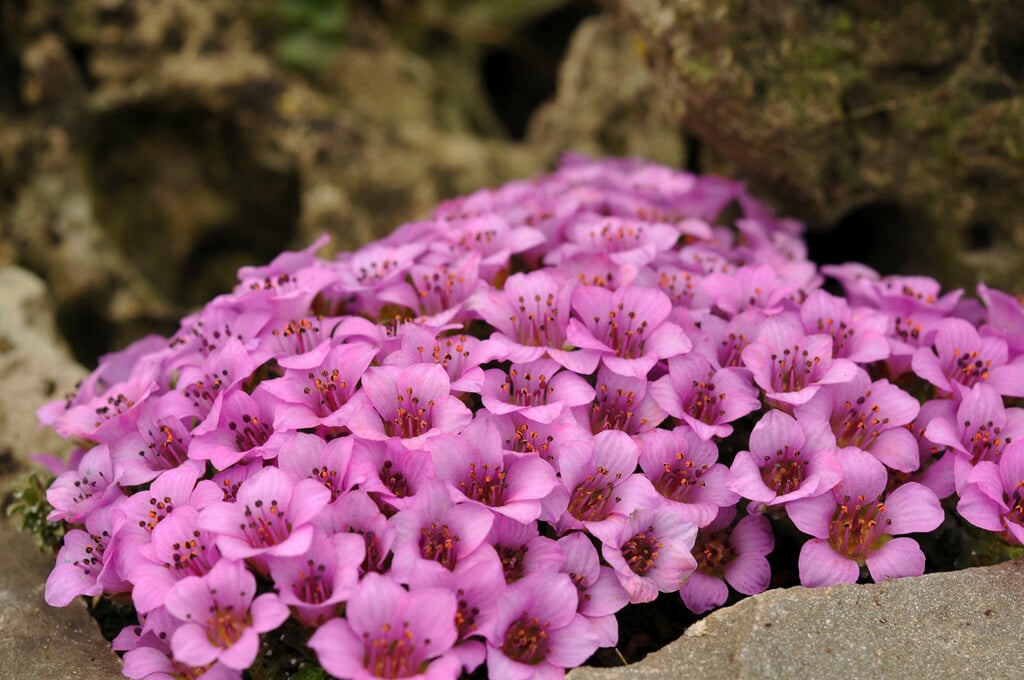Saxifraga oppositifolia (7)
purple mountain saxifrage
A robust, stoloniferous, mat-forming, perennial, with tiny tight rosettes of opposite, ovate, grey-green leaves with masses of solitary, purple, cup-shaped flowers on short upturned stems, in spring
Size
Ultimate height
0.1–0.5 metresTime to ultimate height
2–5 yearsUltimate spread
0.1–0.5 metresGrowing conditions
Moisture
Well–drainedpH
Alkaline, NeutralColour & scent
| Stem | Flower | Foliage | Fruit | |
| Spring | Purple Pink | Grey Silver Green | ||
|---|---|---|---|---|
| Summer | Grey Silver Green | |||
| Autumn | Grey Silver Green | |||
| Winter | Grey Silver Green |
Position
- Full sun
- Partial shade
Aspect
South–facing or West–facing
Exposure
Sheltered Hardiness
H5Botanical details
- Family
- Saxifragaceae
- Native to GB / Ireland
- Yes
- Foliage
- Evergreen
- Habit
- Matforming
- Genus
Saxifraga can be annuals, biennials, evergreen or herbaceous perennials, mostly mat-forming in habit, with simple or palmately lobed leaves and starry or rounded flowers which may be solitary of in panicles or cymes
- Name status
Correct
- Horticultural Group
- Porphyrion section saxifrages are compact, cushion or mat-forming evergreen perennials with small, usually lime-encrusted leaves, and 5-petalled white, yellow or pink flowers in early summer
- Plant range
- Temp. N. Hemisphere
How to grow
Cultivation
Grow in humus-rich, moist but very well-drained, alkaline or neutral soil in light shade
Propagation
Propagate by detaching individual rosettes and rooting as cuttings
Suggested planting locations and garden types
- City and courtyard gardens
- Gravel garden
- Patio and container plants
- Rock garden
- Low Maintenance
- Garden edging
Pruning
No pruning required
Pests
May be susceptible to aphids, slugs, vine weevil, and glasshouse red spider mite
Diseases
Generally disease-free
Love gardening
Sign up to receive regular gardening tips, inspiration, offers and more
View our Privacy Policy
Get involved
The Royal Horticultural Society is the UK’s leading gardening charity. We aim to enrich everyone’s life through plants, and make the UK a greener and more beautiful place.

